“We are ready!”
March 12, 2015 – Well here we are heading south on Baja one more time to finish our 2014-2015 Baja season. This is a very special tour for us as we have Lisa’s Mom, Sylvia and our friends from Surrey, Mark & Kathy with us. We met them at the Oak Creek RV Resort in El Cajon, as well as folks from Yakima, Washington who are also joining us. Our return north for this March tour has brought some terrific weather, reaching well into the 30’s C (80’s F).
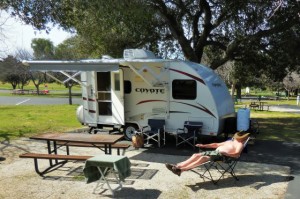
Everyone arrived at the Potrero County Park prior to Day 0 before dark ready to go. The next day we headed to the order to process the tourist permits. As usual this was a speedy process and other than a random search on re-entry to the US we made our stop at the Potrero General Store to purchase ice and were back at the campground. We started our Orientation & Rendezvous Reception at 3:30 PM, the gang was certainly eager to hear about their upcoming adventure. The Wine, water and beer flowed and Lisa’s snacks were appreciated by everyone. Not long after we got started our friends Mike & Kelly from Kansas pulled into the park and we had them join us. They had been on Baja since the Mid-America RV Show in January and this was the 4th time we had seen them this season including visiting their home in Junction City, Kansas in October prior to starting the season. We also had a visit from George & Donna who were heading down to their place in Cabo San Lucas, they were also on tour with us 3 or 4 years ago. Afterwards we sat around a fire at Mark & Kathy’s campsite into the night, I made it until 9:00 PM.
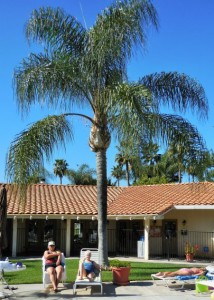
This morning the group was raring to go and we said our good byes to Mike & Kelly. We were off on schedule at 8:30 AM and before you could say adios amigo we were in Mexico. We arrived at our destination without incident, no flat tires this time, thank goodness. After set up we headed off to La Bufadora which was busy. Some action with the blowhole, more with the vendors, this is always a good time for folks to work on their bargaining skills. We returned to the Campground and some to the opportunity to walk on the beach, others just to relax.
It is now Day 2 of the tour and we are off to Fidel’s and our Hosted Hot Dog Roast. More Fun & Adventure!


Did you now?
Ensenada (Spanish pronunciation: [enseˈnaða]) is a coastal city in Mexico, the third-largest in Baja California. Located 125 kilometres (78 miles) south of San Diego on the Baja California Peninsula, it is locally referred to as La Cenicienta del Pacífico, “The Cinderella of the Pacific”. One of the first settlements founded in the Californias, Ensenada has emerged as a cruise ship destination, aerospace center, and there is a nearby region to the north east where wine grapes are grown (Valley de Guadalupe). It is said that the first Vitis vinifera made it to the region’s San Ignacio Mission in 1703, when Jesuit Padre Juan de Ugarte planted the first vineyards there. Situated on the coastline of Bahía de Todos Santos—an inlet of the Pacific Ocean on the peninsula’s Gold Coast—the Port of Ensenada is an important commercial, fishing, and tourist port. The city is home to a navy base, army base, and Ensenada Airport, a military airfield which doubles as an airport of entry into Mexico.

on tour 24
Ensenada is the municipal seat and cultural and commercial center of Ensenada Municipality, one of five into which the state is divided. As of 2010, the city of Ensenada had a population of 466,814. Ensenada is backed by small mountain ranges. Proximity to the Pacific and a warm Mediterranean latitude create mild year-round weather. The rainy season during the winter is short and the area is prone to prolonged droughts, which can threaten its grape harvests. The National Park Constitution of 1857 created the Sierra de Juarez and San Pedro Martir National Parks, which maintain one of the best astronomical observatories in the country.
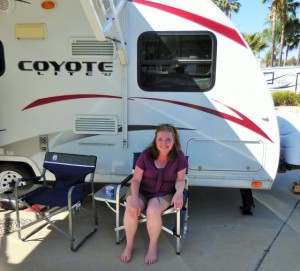
Past
When the first European explorers discovered the region, the Yuman Indians inhabited the region, of which tribal groups such as the Kiliwa, Paipai and Kumiai still exist. These semi-nomadic indigenous people lived in the bay area and interior valleys of the Sierra de Juárez and San Pedro Mártir. Kumiai are very active in the San Diego County operating a number of Casinos.
Bahia Todos Santos, on which Ensenada now stands, was first reached by sea by the Portuguese explorer Juan Rodríguez Cabrillo on the vessels El Salvador and Victoria. The city was founded September 17, 1542 under the original name San Mateo. In 1602, while mapping the coast of the Californias in search of safe harbors for returning Spanish galleons from Manila to Acapulco, the city was renamed Ensenada de Todos Santos by Sebastián Vizcaíno.
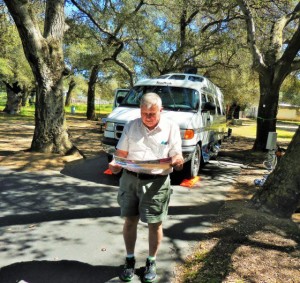
The first permanent settlement was established by the Jesuits during the seventeenth or eighteenth century. After the expulsion of the Jesuits in 1768, the Dominicans took over the representation of Europe in what is now Ensenada. In 1805, José Manuel Ruiz Carillo obtained permission to establish himself in Ensenada, being appointed governor of Baja California and building in Ensenada a house that survived until the final part of that century, despite being briefly taken by William Walker, the self-declared “president” of the Republic of Lower California, in 1853-54.
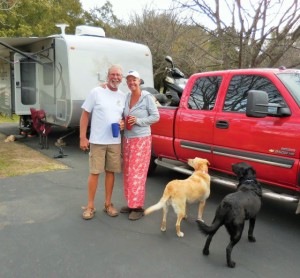
In 1882, Ensenada was designated the capital of Baja California, and attempts at developing the area were made by the English Mexican Land and Colonization Company. These were interrupted by the Mexican Revolution, which left the area devastated. In 1915, the capital was transferred to Mexicali, and in 1930 the population of Ensenada was only 5,000. During the early part of the twentieth century, the city’s name was shortened from Ensenada de Todos Santos to Ensenada, a change made in order to avoid confusion with Todos Santos in Baja California Sur.

The twentieth-century development of Ensenada was assisted by prohibition, which sent Americans and Canadians south of their border in search of entertainment and alcohol, developing first Tijuana, then Rosarito, and finally Ensenada as tourist destinations. The Hotel Riviera del Pacífico was opened in 1930, briefly placing Ensenada on the international glamor map and was visited several times by President Miguel Aleman, international artists and political personalities; yet unlike the Hotel del Coronado, it was never a sustained success (despite giving rise to the claim that the Margarita was invented there). It really flourished only in the early 1950s, at which time Ensenada’s population had risen to 20,000. The hotel finally closed in 1964, however it was later reopened as a cultural center and museum. By this time, other hotels had opened, and the population and economy of Ensenada had grown and diversified towards their present status.

Mining
One of the earliest activities in the Ensenada region was gold and silver mining, and some of these mines remain in limited operation. In recent years, very large amounts of gravel have been extracted from creek beds in rural areas and exported for infrastructure works in California in the US. However, this has been a controversial activity, as environmentalists have argued that depleting the creek beds will decrease the amount of water that is absorbed by the soil during the brief rainy season, negatively impacting the agriculture. As of November 2005, the extraction of gravel remains unchecked. The aforementioned extraction activities have been linked to former Governor Ernesto Ruffo.
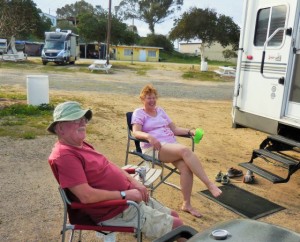
Flora and Fauna
Many of the terrestrial or marine species inhabiting the surrounding the Greater Ensenada area in the Baja California islands are unique. Guadalupe Island, off the coast of the city, is one of the best places in the world for observing the great white shark. The island has been a wildlife sanctuary since 1975. The city’s offshore is host to an array of aquatic mammals including the gray whale, the Guadalupe fur seal and California Sea Lion; terrestrial mammals include various squirrel species, otters, the civet, coyote, bobcat, puma, and ocelot. Bird species include hawks, pelicans, roadrunners, and various waterfowl and oceangoing species. Fish include tilapia, rainbow trout, leopard shark, and as mentioned before the great white shark.

Climate
Ensenada is blessed with a wonderful climate. The average rainfall is 280 millimetres (11 inches) per year, falling mainly in the winter months. Ensenada has a warm, dry semi-arid climate, much like the rest of northwestern Baja California. During the colder months from November to February, rainfall is scarce and temperatures average 13 C (55 F). On the other hand the warmer months from June to September are the driest, and during this time maintain average temperature of 21 C (70 F). For Ensenada’s warm summer coastal location, the city’s climate is greatly affected by the offshore cold California Current. Due to the current, the late summer and early fall seasons are typically the warmest periods for the city. Santa Ana winds – observed in much of Southern California as well – are responsible for temperature rises at any time of the year. During Santa Ana’s, wind direction changes and brings warm air from the interior to the coast. Snowfall is rare with the last recent one in January 2007, when the hills south of the city received small amounts of snowfall. Similar to the rest of the Gold Coast and South Coast of California, Ensenada experiences the periodic May Gray and June Gloom marine layer effects.

Economy
Research and manufacturing
Ensenada is developing scientific research and natural science sectors, with special focus in the marine sciences sectors. Ensenada is claimed to be the city with the highest number of scientists per capita in Latin America. The Center of Scientific Research and Higher Education of Ensenada (CICESE) conducts research in Earth Sciences, Applied Physics, Oceanography, Communications and Experimental and Applied Biology. Further research is conducted on the campus of the Autonomous University of Baja California, Ensenada (UABC), mainly in Oceanography and education areas although there are groups in Physics, Biology and other related sciences. Mexico’s National Autonomous University (UNAM) has a research campus in the city. The campus hosts the Institute of Astronomy and the Centre for Nanoscience and Nanotechnology. The National Astronomical Observatory (Mexico) is located on the mountains south of the city.
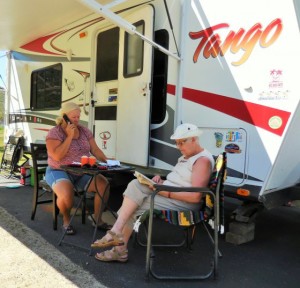
The city is home to the largest cluster of bio-medical device companies in Mexico and is a developing center that is drawing a growing number of biotech researchers. Unique to the city is that its biotech cluster is near that of another, larger, cluster in San Diego. The proximity of these two biotech clusters fuels their interaction. Currently Ensenada is not part of any rail transport grid with which it could use to transport cargo and other materials, although there are plans to build a rail line to the United States border in the short to mid-term future that would link it to San Diego–Tijuana. Unlike the larger cities to the north, Ensenada has only six major industrial parks, compared to 26 in Mexicali and 51 in Tijuana, as its economy is more focused on tourism and technology.

Maritime industry
The Port of Ensenada has a large influence on the civic economy. Ensenada is home to the only deep-water port in the state of Baja California and on the Baja California Peninsula. The port is part of standard shipping routes that directly link it with the Mexican cities of La Paz, Manzanillo, Mazatlán, Acapulco and Lázaro Cárdenas; the American cities of San Diego, Long Beach and Los Angeles; the Guatemalan city of Puerto Quetzal, the Chilean city of Valparaíso, the Japanese city of Yokohama, and the Chinese city of Hong Kong. Ensenada is where the Fender standard series guitars and basses are produced.

Tourism
Ensenada is located some 108 kilometers south of the border with the United States, connected via a four lane toll road MX-1D and a two lane free road, which makes it a natural destination for tourists on short vacations by car. Ensenada’s proximity to California also makes it a destination for short cruise ship trips from Port of Los Angeles and Port of Long Beach. As of 2005 four cruise lines maintained ships that docked in Ensenada weekly, though, one of these ships – the Monarch of the Seas, operated by Royal Caribbean Cruise Lines – ceased operations in the Pacific in mid October 2008. The world-renowned Baja 1000 (Baja Mil) off-road race is held in Ensenada every year in late November, while the Baja 500 race is held in early June. Off-road enthusiasts use Ensenada year-round as a starting point to explore Baja California.
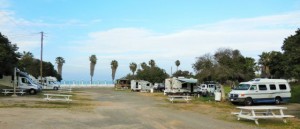
Watersports and ocean proximity have formed an integral part of the structure of tourism and its relation to economics in the city. Ensenada and coastal beach towns of Greater Ensenada have several renowned surfing spots, such as San Miguel Beach, California Trailer Park, Stacks and 3 M’s (Tres Emes in Spanish), which are located on the north coast of the city. Todos Santos Island is a small island located west of Ensenada (about two hours by boat) and a world-famous surfing spot. Known for natural beauty and consistency, surfing spots of the region have led surfing contests such as the Billabong XXL to be held at Todos Santos Island, part of the city, several times. Wave faces can reach above 60 feet on the island and in 2006 Brad Gerlach, 2006 winner of Big XXL, surfed a wave of 68 feet in December 2006. Tourists also stop in the city on their way to their destinations farther south in the municipality where spots famous for their excellent windsurfing are located. Maritime pleasure in the city also extends to the global Newport to Ensenada International Yacht Race, billed as the world’s largest international sailing event, begins in Newport Beach and finishes in Ensenada. Whale watching has also developed as a tourist draw in the city due to the gray whale’s annual migration from Alaska to the lagoons of Baja California Sur. Between the months of December and March, and back in the months of April and May, whales can be seen from the coast of Ensenada.

There is a street in Ensenada called “La Calle Primera” or Adolfo Lopez Mateos (“1st Street”). It’s a tourism spot in Ensenada due to its many “Curios” (short for “Curiosidades” — trinkets and souvenirs) shops, restaurants, hotels, bars, and popular clubs such as the Hussong’s Cantina, Mini Bar, Shots Factory, Lutzenkirch The Nightclub and Papas & Beer. La Primera is a very busy street, filled with tourists and locals. La Primera is just one block away from Ventana al Mar (“Window to the Sea”), a boardwalk/seawall avenue where an enormous Mexican flag is located. The Ensenada Carnaval is one of the country’s largest, as thousands of people gather in the streets for six days and nights. Just south of the city on Highway 1 is located the second-largest of three known major marine geysers in the world, colloquially known as La Bufadora (“The Blowhole”). La Bufadora attracts many tourists and the street leading to the viewpoint is a commercial area where a variety of authentic Mexican arts and crafts are for sale; bartering over prices with vendors is customary. There are also seafood restaurants and street vendors selling “churros” (fried pastry with cinnamon and sugar) and other delicacies. A visit to La Bufadora is included on our Baja Amigos RV Caravan Tours.
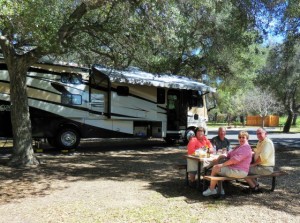
Emblematic sites representative of Ensenada such as the Civic Plaza (or Plaza of the Three Heads as commonly known to locals), containing sculptures of Mexican heroes Benito Juarez, Venustiano Carranza and Miguel Hidalgo, the enormous Mexican flag, and the Malecon boardwalk – and Naval cruise terminal are found on and near the coast of the bay. Several marinas including Ensenada Cruiseport Village, Hotel Coral & Marina, Punta Morro Resort are located on the city’s coast.


